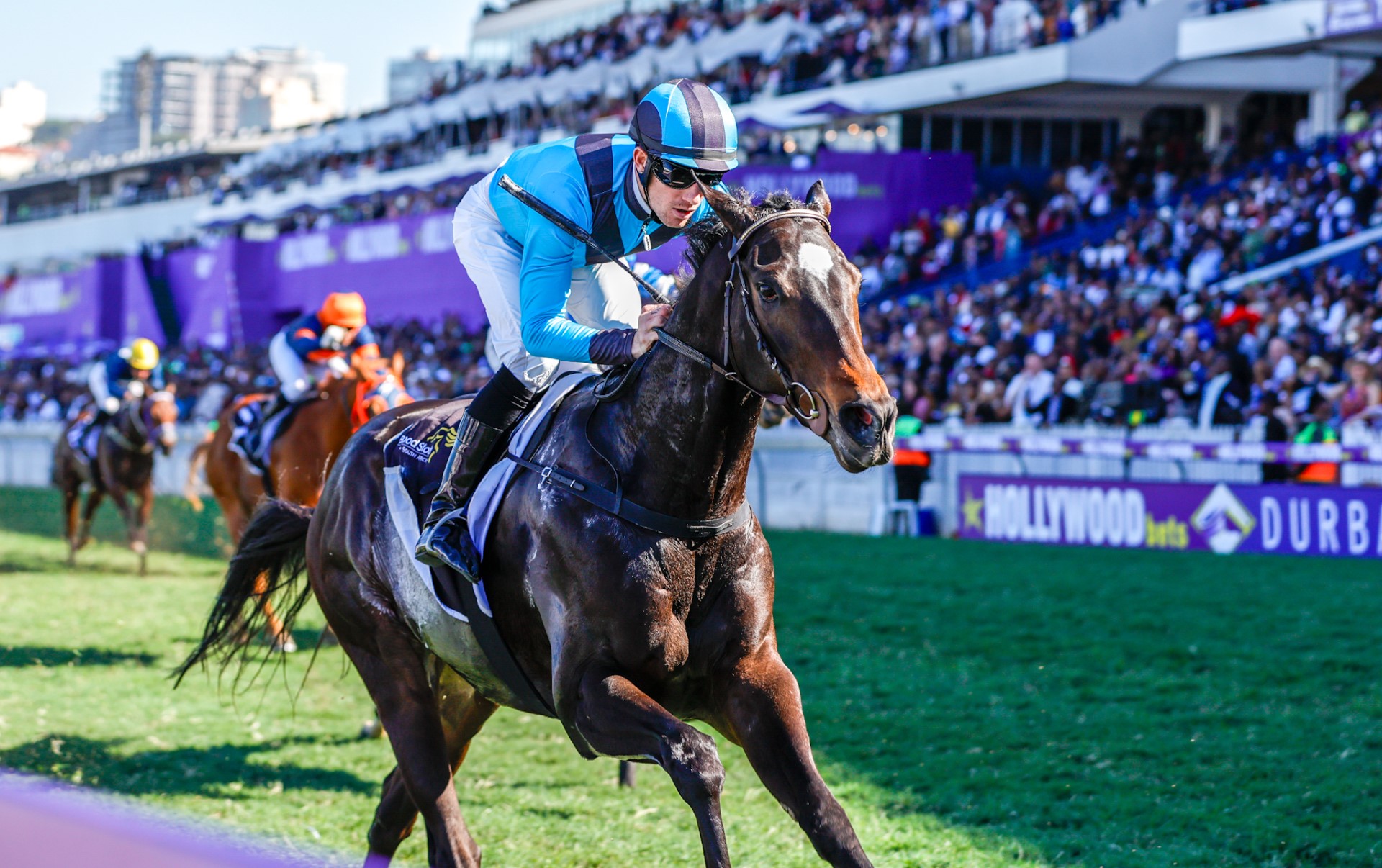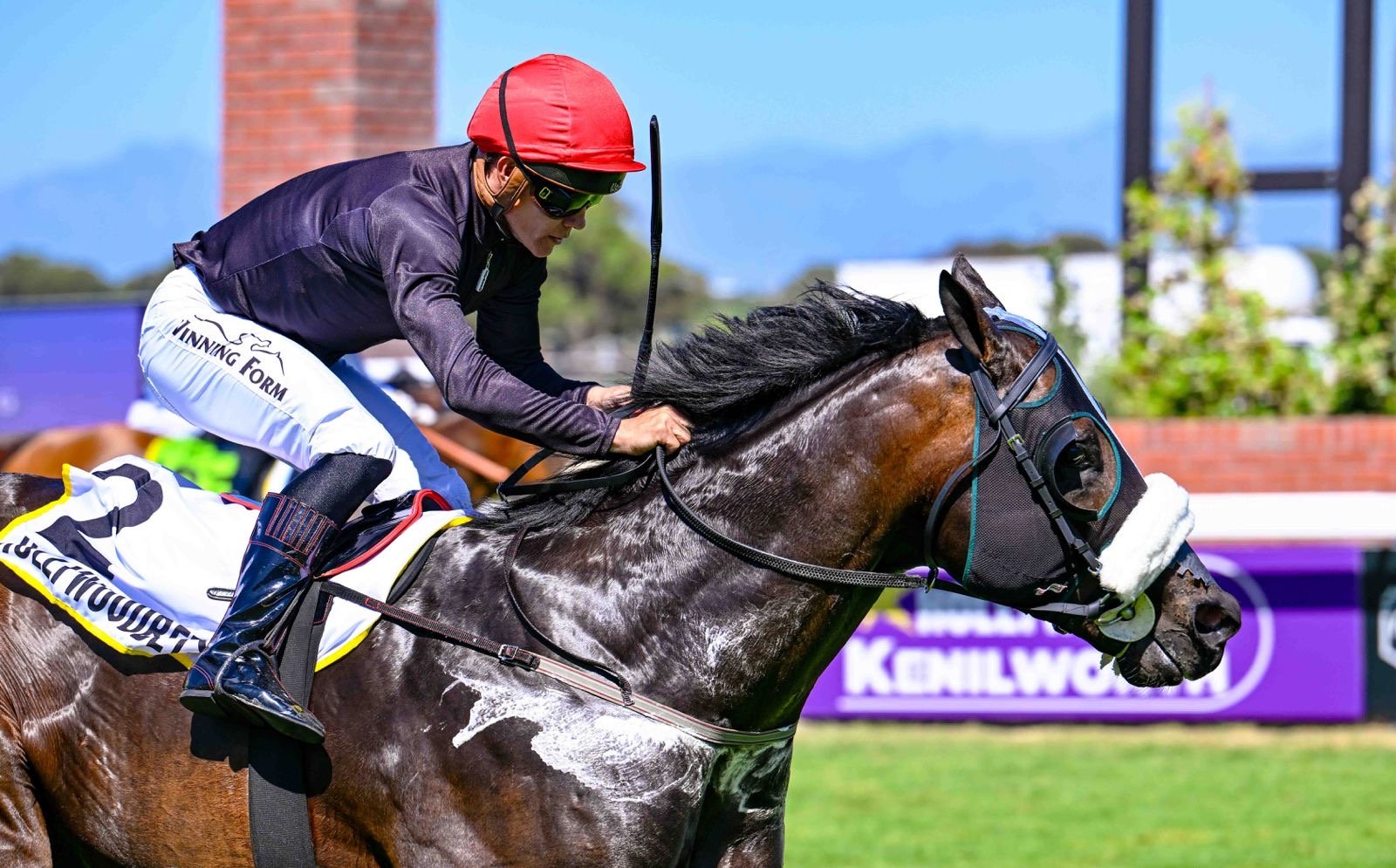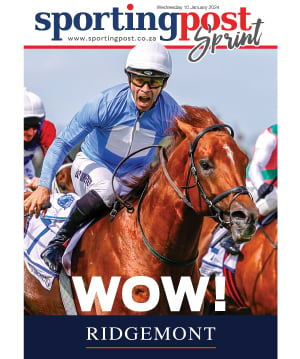With the National Yearling Sale just hours away, we thought this may make for interesting reading.
In 1979, self-made millionaire and founder of Edgars Stores Ltd, Sydney Press bought Gallantry for what seemed a staggering price: R100,000!
In those days, in a climate of an exchange rate of R1,00 = US$1,35 – it was enough to buy four brand new versions of his motor car, a Rolls Royce Silver Shadow, or six brand new top of the range Mercedes Benz, writes Robin Bruss.
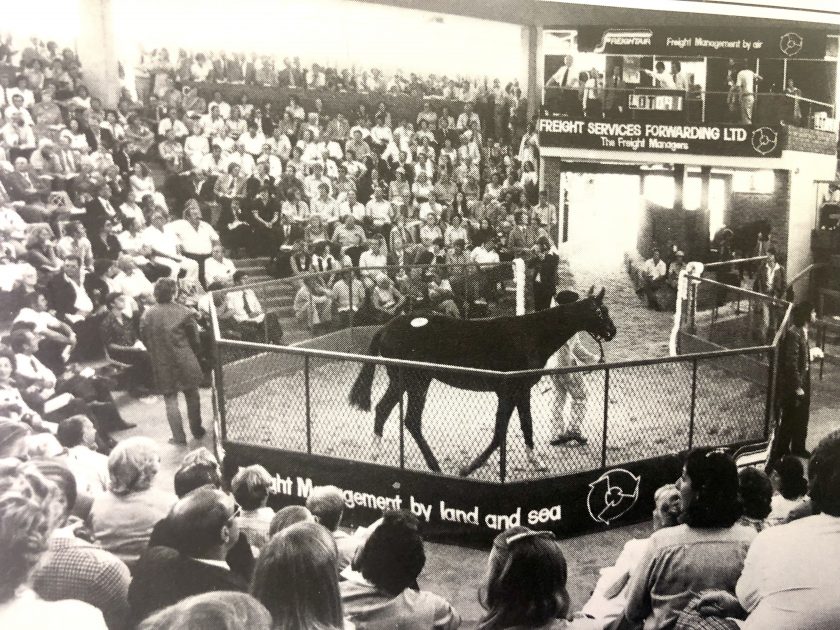
The 1979 National Yearling Sales and GALLANTRY becomes the first horse to reach the R100,000 barrier (Pic -SA Horseman)It seemed such a sensation at the time, an army of photographers appeared and the following day, the story of ‘Man Buys Horse for R100,000’ was on the front page of the Sunday Times in full colour.
Racing was big news then, whereas today, even the winner of the Durban July doesn’t get a mention in the Times, only what fashions the ladies were wearing.
GALLANTRY’s arrival in the sales ring was predicted to be a sensation, for he was a magnificent looker, big and imposing, and was by the Champion Sire of the day, Plum Bold (USA), son of 8x Champion USA sire Bold Ruler.
In addition, the was out of the peerless Champion Broodmare of the Year, Sun Lass, Grade 1 winner of 10 races, including the Cape of Good Hope Paddock Stakes, and had already bred 10 winners, including the Rothmans July winner and Horse of the Year, Yataghan.
By a Champion, out of a Champion, brother to a Champion – and the looks to match, the finest yearling in decades, they said. He wasn’t just a prize offering. He was The Prize.
He was bred by Alex Robertson of Vlakfontein Stud, son of the great Allan Robertson, and whose broodmare band comprised mostly high-class race mares, from whom he had bred many champions.
Sydney Press had started out as an office boy in the small town of Springbok, too poor to go to University. But he was an incredibly smart man who had not only built an empire of 450 department stores, but also received the award for Harvard Businessman of the Year.
I was in my 20’s when I met him, and when he told me he wanted to start racing and breeding, it seemed a very obvious choice to suggest he start at the top by buying GALLANTRY at the National Yearling Sale, as well as a well bred filly as a future foundation broodmare.
“In fact,” I suggested, “Gallantry is not only a racehorse prospect, he is a future stallion prospect, therefore must be worth more than the racehorse market would suggest.”
“If Robert Sangster could buy Northern Dancer’s son The Minstrel for $250,000 at Keeneland, win the 1977 English Derby, and then be worth $8 million as a stallion in 1978, why shouldn’t something similar apply to the South African bred Gallantry in 1979, a horse who breeders and buyers clamoured to be the best in years.”
Mr Press loved the idea of a new dimension in the approach, and determined that he would be the victor in the Sales Ring. In fact, he would be willing to bid quite a lot more than R100,000.
“Tell no-one, just reserve two seats in the sales hall and register me as a buyer” he said.
It was Select Day, 2 April 1979.
Mr Press was a man of singular determination.
He had no interest in the sale itself, only the bidding on Gallantry, whom he had yet to lay eyes on.
I estimated the horse would be in the ring around 15h00, lot 91. At 14h45 I was anxious that he would arrive too late, but then the Rolls pulled up at the doorway of the TBA complex in Germiston, and he hopped out, resplendently dressed in a light grey Edgars suit – what else? We took our seats directly opposite the auctioneer’s podium, and a few lots later Gallantry stepped into the ring.
The stage was set. There was a hush.
The ring was tightly packed, every seat taken, and men and women packed six deep around the walkway at the top. The sales complex was still new, no agency offices, no outside bidding ring, no phone bidding, no internet.
If you were a buyer, you had to be there.
The famous Peter Lovemore was the auctioneer, assisted by Ireland’s David Nagle, who had been a shareholder in The Minstrel and had told me the inspiring story of his syndication – and on which dream we were now pursuing Gallantry. He would be more than just a horse, he would be the future of the farm we were planning.
“Can I have an opening bid?” called Lovemore. “Give me 100,000” he shouted, the usual exaggerated start, from which he would then drop to R50,000.
Only this time, the short dapper man in his grey suit raised his catalogue. Sydney had struck.
“Is that a bid?”
“Yes!… I’m bid 100,000 Rands!”
There was a gasp around us, and at the same time, it seems like the world was in slow motion, as the ripple effect of what had happened encircled the ring.
“Four Rolls Royces!”, I thought. I could hardly breathe.
“Who will bid me 110,000 Rands?” called Lovemore.
There was a stunned silence. This had not been anticipated.
“Then I sell to my starter in block A, I can’t believe it, the one and only bid, and I sell, I do, for… One Hundred Thousand Rands!”
It seemed an eternity that the hammer hung in the air, and then –
KNOCK. The hammer fell. SOLD.
Then it was pandemonium.
“Who is that man who bought the horse?” “Does anyone know who that is? He’s sitting with that boy from Zimbabwe, what’s his name again? Can you believe it, they must be crazy”.
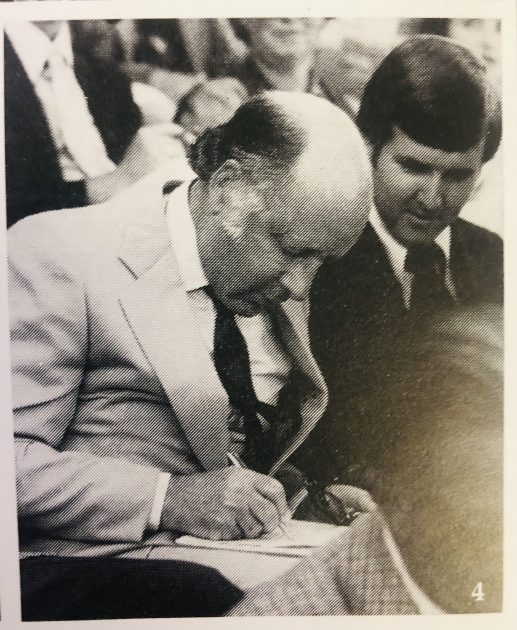
Sydney Press signs the TBA vendor roll alongside the writer
The Vendor Roll was brought to Mr Press by the auctioneer Peter Lovemore, and he signed it to a round of applause.
By then the breeder Alex Robertson had also arrived to shake his hand, ask his name, and thank him.
Mr Press stood, he thanked me, telling me to arrange the insurance and details of the trainer, and we left to go and take a look at our horse, pose for some photographs, and then he strolled to the waiting Rolls, and he left to go back to the office.
Mission accomplished.
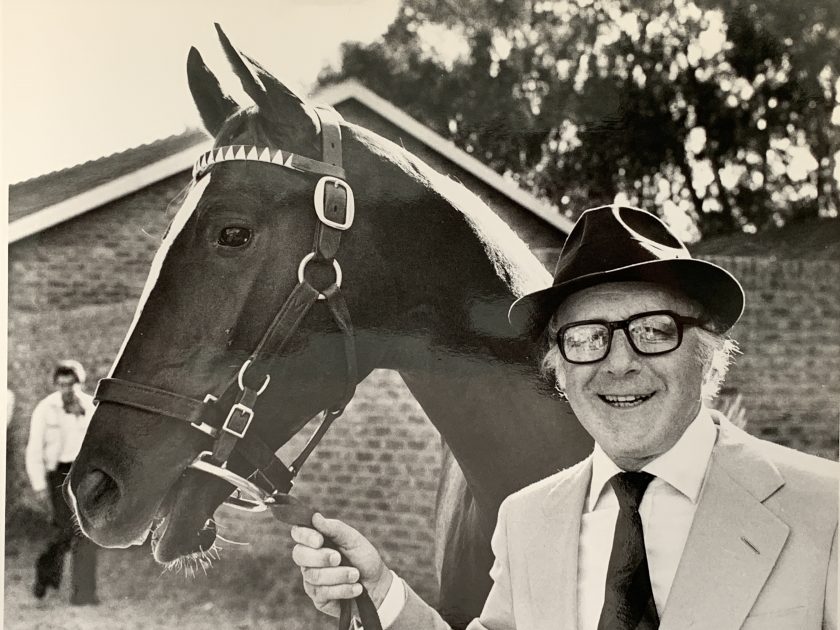
Sydney Press takes charge of GALLANTRY at the Sales, he was thrilled to own his first colt
“Who is going to train the horse?”
We decided on Terrance Millard in Cape Town.
“Why him? Don’t they know, he is a good trainer of fillies, not colts, can you believe it?”
I heard the whisper around me. “And he trains in Cape Town, not Joburg, off the beaten track!”
Four years later, Terrance won the July for Sydney with Tecla Bluff (Arg), then he became Champion trainer of colts and fillies, and dominated for six consecutive years.
Mr Press was always good at human resources. Understanding how people think and what motivates them and choosing wisely, was how he built Edgars.
Later on that Select Day, I bought the filly to complete our purchases.
Lot 183, Permission, by Persian Wonder out of Miss Terese by Preamble II for R27,000. This was the second highest priced filly in the sale.
It was a bit of a quirk of fate when she ran only twice and went wrong, and only produced 4 foals before being lost. However, one daughter produced Broodmare of the Year, Divine Nymph, dam of SA Classic Gr1 winner Divine Jury, and another produced the J&B Met Gr1 winner Martial Eagle. Foundation mare she was.
Mr Press and I were invited to the launch of the SA Racehorse Owners Association (SAROA) where the major owners wanted their own association as a breakaway from the Owners & Trainers Association.
“Trainers are our employees,” said the new chairman. “How could we possibly be thrown in the same mix?”
His wife approached me. “I don’t know who you think you are Colin Bruss,” she said, adding: “But I want you to know that we spent more than R100,000 on all our purchases, and I think you were just trying to show off to embarrass us.”
I was too polite to say that my name is Robin and not Colin, and I was also thinking, ‘we can’t be embarrassing you, lady, you are making a fine job of doing it yourself!’
As in all cases of winning and losing, you find that some folk are genuinely pleased, whilst others will frown and call it a get-up, and not wish you well. You can learn a lot about human nature in horse racing.
I told the story to Mr Press, he laughed and said another phrase, which has always stuck with me:
“Robin, you can’t teach pigs not to grunt, so don’t worry to even try!”
So to the second part of the story.
It’s one thing to buy an expensive horse, but to truly justify it, you have to win, and that’s the much harder part.
Rather like The Minstrel, we decided to sell shares and invite some prominent breeders in the quest to enjoin racing and breeding values into a yearling purchase.
Sydney kept two thirds of the horse, I took a share in lieu of agent’s commission, breeder Alex Robertson took one share, trainer Terrance Millard a share, and Laurie Jaffee, Peter Wright, and Dr Tommy & Veronica Foulkes, one each. None of the major breeders joined.
The Coromandel Syndicate was the first of the owner syndicates in South Africa, recording something new for racing. We were told it could not have more than 10 members, or would breach the rules of the Jockey Club.
“We are not about to communalize racing,” they said.
We registered silks of chocolate brown, gold cap.
GALLANTRY went into training at Terrance Millard’s Park Lodge at Milnerton. He was ridden by Felix Coetzee when he won his maiden as a 2 year old, and what a maiden race it was!
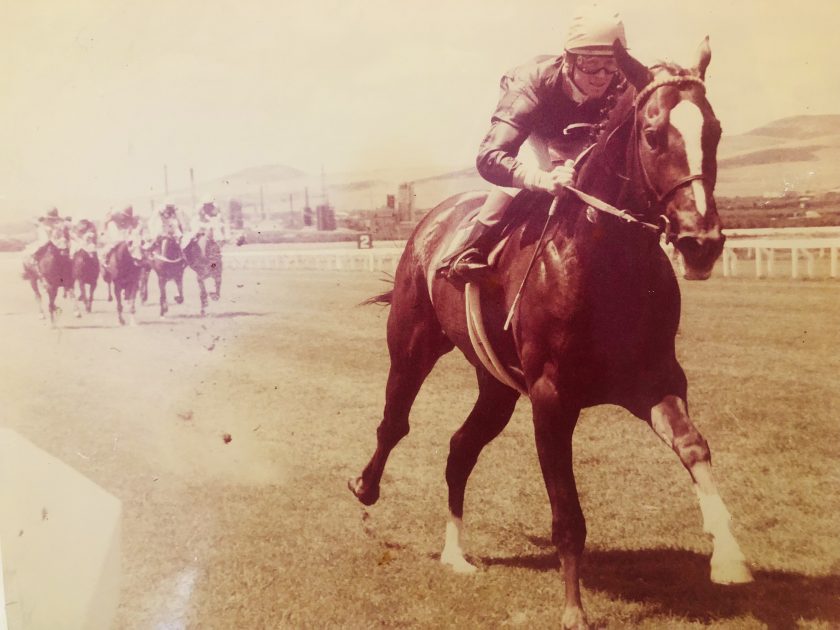
Gallantry’s first win was like the famous unbeaten Eclipse: he was First, the rest were nowhere.
At this point, as an owner, you get a bit above yourself, thinking, “oh boy, we are going to win everything, including the July! Gallantry first, the rest nowhere.”
Then came the call from trainer Millard:
“Sorry to tell you, but the horse has started making a noise in his work, he has developed a wind problem, and can’t breathe properly, he is going for a soft palate operation.”
Racing’s rollercoaster had begun!
The operation was partly successful. Thereafter, when Gallantry ran over distance, and was forced to arch his neck when restrained off the pace, he would often choke up. He would have to be campaigned as a sprinter where he was off the bit and his neck stretched out.
The Durban July plans to emulate his brother Yataghan went out the window.
We ran him in the Cape of Good Hope Guineas Gr1 at Milnerton, where there was always a furious pace because of the tighter track on the near bend. But for running wide, he might have won, but rolled into second by ¾ length to San Louis.
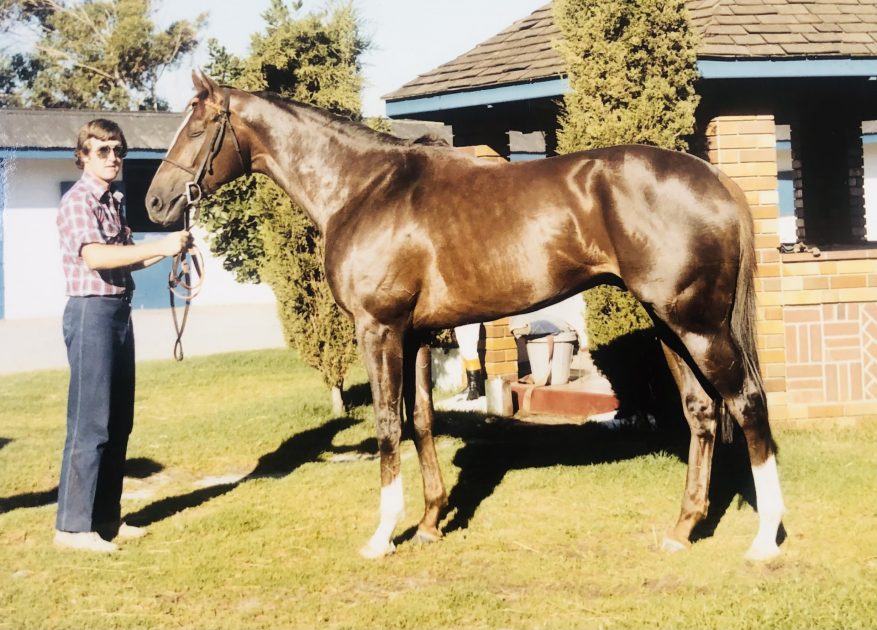
Gallantry with the writer in Cape Guineas week 1982 at Terrance Millard’s Park Lodge – stripped and ready to run
We tried the Cape Derby Gr1 and he started favourite. Mr Press by then had gone for open heart surgery and didn’t attend the races.
I flew to Cape Town and was on the Owner’s stand at Kenilworth when approached by a Steward of the SA Turf Club.
“Young man,” he started, “what are you doing here? Where’s your badge?”
“I don’t have a badge, but I’m a member of the syndicate,” I replied.
“That doesn’t mean anything here. No metal badge, and you have to leave the stand!” he roared.
I went down to the ground floor to stand amongst the people and the punters. “Mr Press,” they would call me, “will your horse win today?”
“Only if you guys are with me,” I would say back. I felt like I had arrived!
The Derby was not our day, but GALLANTRY became a fine sprinter winning 9 races, including the Cape Merchants Gr2, and earned R78,530 before retiring to stud.
What became very interesting was that back in the 1970’s and the 1980’s, in order to encourage thoroughbred breeding, the tax laws provided that any horse bought for breeding could be written down to the standard value of a draft horse that pulled a plough.
The tax value had been set at R10 in 1910.
This meant that by declaring Gallantry as a professional breeding stallion, his yearling purchase price could be written down from R100,000 to a tax value of R10, and therefore R99,990 could be taken as a deduction from ANY taxable income.
Effectively the entire cost of the horse came off Mr Press’s tax bill. It felt like winning the July without the winner’s circle!

Gallantry retired to Tommy & Veronica Foulke’s Normandy Stud in the Western Cape.
I suppose that trying something new is not everyone’s cup of tea.
Despite his illustrious pedigree, Graded Stakes form, and movie star good looks, he was ignored at stud by the top breeders.
Alex Robertson had retired, and Mr Press had bought his first two mares, and sent them.
Gallantry covered only 10 mares in the first crop, 8 of them ran and 5 won. In the second, he had 5 runners and 4 winners.
One of these, bred by Normandy Stud, went for sale as a weanling without reserve. I decided to buy him – only one bid, R1,000.
I took him to the KZN Yearling Sale to try and make a profit. The news was worse. There was no bid at all. Did I own an asset or a liability? I lost confidence.
The farrier walked past. “Hey Johnny Dawson?,” I said. “Do you want a horse? You can take this one for R500. He is by Gallantry.”
Johnny was happy, his wife Tessa would train the colt, he was given the illustrious name of BOND. Well, as in all roller coaster adventures, Bond turned out to be a cracking racehorse. He won 9 races, the Durban Merchants Gr2, was second in the Golden Horse Sprint Gr1 twice, and ended up bankrolling R322,000 in stakes.
By this time, we had shipped Gallantry off to Zimbabwe to get him more opportunity. In that country he produced 126 winners from 243 foals, including 17 SW (which is 6,5% or more than double the average of the breed). He became the Champion Sire one year, and he fulfilled his destiny.
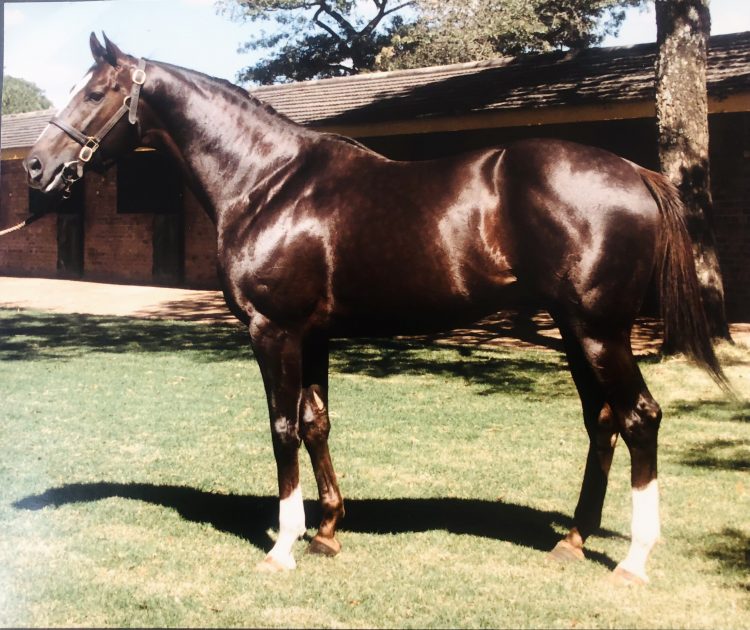
Gallantry – the horse with movie star good looks, when Champion Sire in Zimbabwe 1989
One of the things we learned as newcomers to the 1980’s version of the business of yearling sales, racing and breeding, was that it’s a competitive game.
We are all friends, except in competition, and to have the courage of your own convictions is important, if you are putting yourself on the line.
In the end, despite the ups and downs, we learned as much about human nature, as the ups and downs of racing. Financially it was a win, but as an experience it made us richer and wiser.
For Sydney Press, despite his health issues, it emboldened him to take the next big step.
In 1983 he won the Rothmans July with a filly Tecla Bluff (Arg), trained by Terrance Millard, and the following year, he bought his own private stallion, Northfields (USA), son of Northern Dancer, for a record price of U$2,750,000 – enough to buy a hundred Rolls Silver Shadows – and he bought 40 stakes winning mares.
It was a quest to find his place in history and let the tax man pay for it.
And that’s another chapter for another day.








